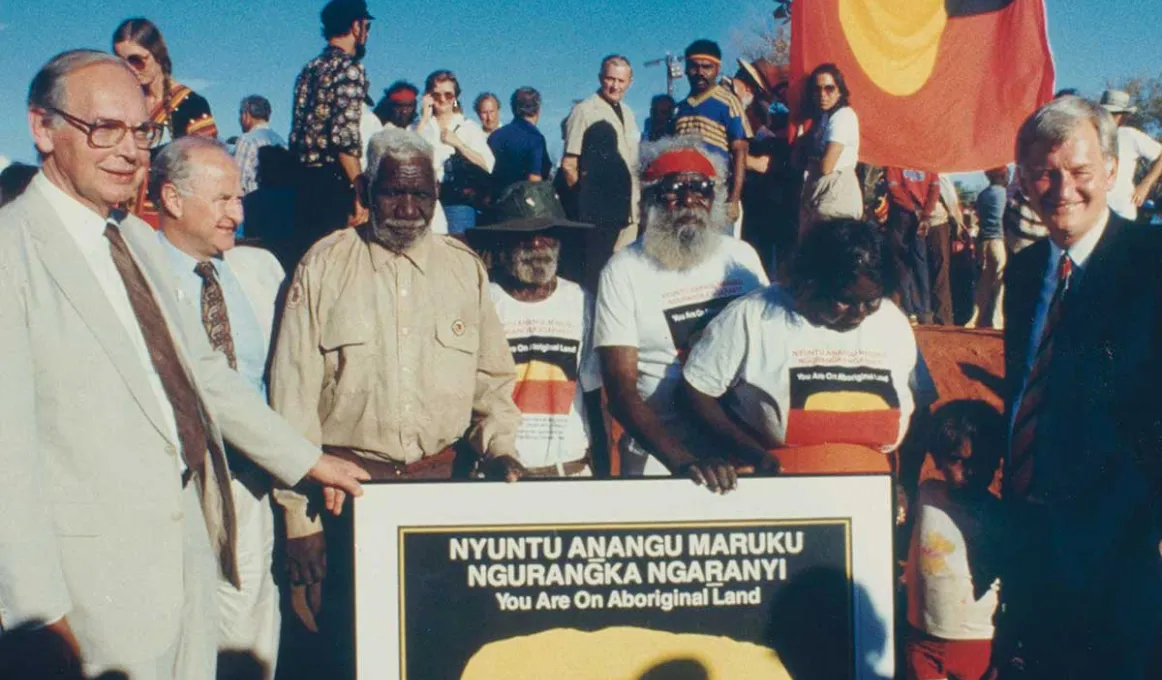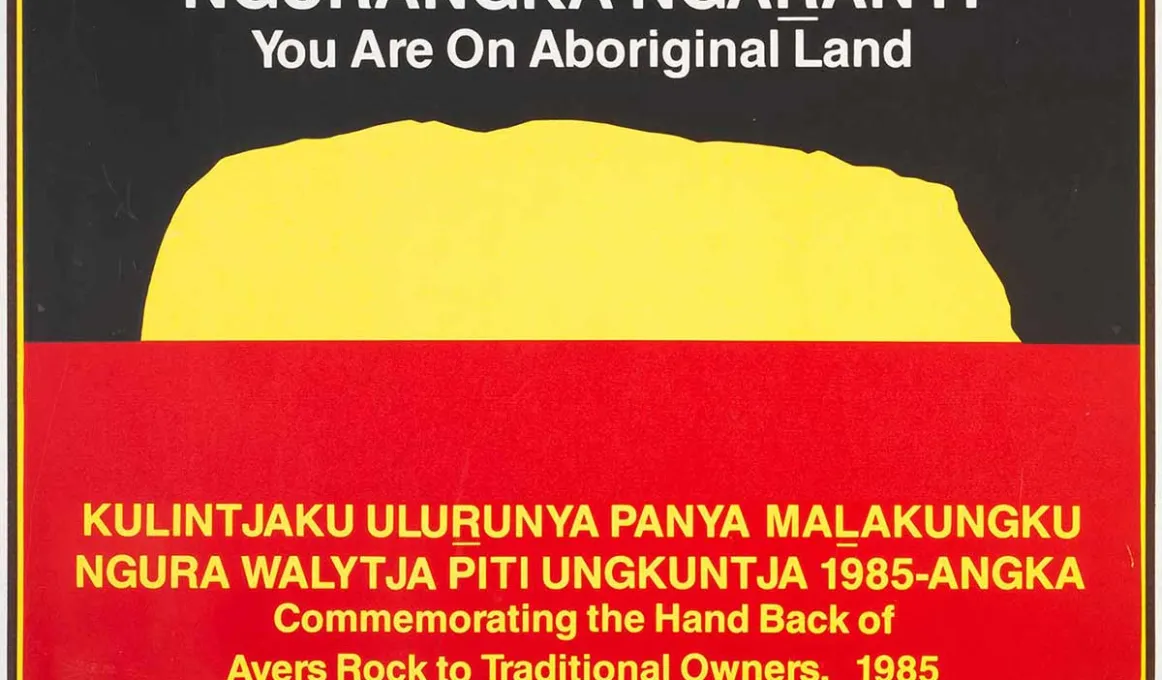Acknowledging the handback of Uluru–Kata Tjuta


On 26 October 1985, a significant ceremony took place in the heart of the Central Australian desert, when Anangu people were handed back their traditional lands around Uluru–Kata Tjuta National Park.
38 years ago, on 26 October 1985, a significant ceremony took place in the heart of the Central Australian desert at the base of Uluru. In attendance were hundreds of Traditional Owners, Anangu, Aboriginal and non-Aboriginal people, all eager to witness the handback of Uluru– Kata Tjuta National Park to the Anangu.
The handback was a monumental moment in Aboriginal land rights history, following federal parliament passing the Aboriginal Land Rights (Northern Territory) Act 1976 which meant that First Nations peoples could claim land where traditional ownership could be proven.
Uluru–Kata Tjuta is one of the most striking and culturally iconic places in Australia. Both Uluru and Kata Tjuta are large geological rock formations in the 1,325 square kilometre National Park. The large sandstone rock of Uluru and the multiple domes that make up Kata Tjuta are over 500 metres in height, abruptly appear amongst the relatively flat sandplains and woodlands that surrounds them.
Uluru–Kata Tjuta has always existed as a sacred site for Anangu. The Anangu people believe the landscape was created by ancient beings, and that they are direct descendants of those beings. Kata Tjuta is considered sacred under Anangu men’s law and the Anangu women do not go to Kata Tjuta.
At the ceremony, Governor-General Sir Ninian Stephen passed over the title deeds to Uluru–Kata Tjuta National Park to the Anangu people as the Traditional Owners of this vast Country.
In the same ceremony, Anangu signed an agreement leasing the park back to the Australian Parks and Wildlife Service (now Parks Australia) to jointly manage the park for 99 years.
Anangu traditional law and spirituality, behaviours, stories and knowledge, known as Tjukurpa, guides everything that happens throughout the National Park, including conserving plants, animals, culture and Country. Anangu continue their responsibility for protecting and managing the lands around Uluru and Kata Tjuta.
It is reported that non-Aboriginal first saw Uluru– Kata Tjuta in the 1800s and continued to explore the area over the following decades.
In the early 1900s, the land around Uluru and Kata Tjuta was declared an Aboriginal Reserve, few non-Indigenous people visited the area until the 1940s.
The first dirt road to Uluru was not built until 1948 which brought miners and tourists into the National Park. Tourism gradually grew, and a new airstrip was built to allow visitors to fly in. Tourism saw an increase in people climbing the rock, without consultation with Traditional Owners and Anangu felt responsible for visitors’ illness and injuries.
The Ayers Rock (Uluru) National Park was declared in 1950 and Kata Tjuta was added to the park to create the Ayers Rock-Mount Olga National Park in 1958.
In the late 1970s, Traditional Owners, the Pitjantjatjara Council and the Central Land Council urged the Australian Government to amend the Aboriginal Land Rights Act (NT) to allow an Aboriginal land claim for the Uluru–Kata Tjuta National Park.
The park has seen many more milestones since including being added to the UNESCO World Heritage List in 1987 and again in 1994. A year later, a cultural centre was opened in the park and 5 years after that Nova Peris took a circuit around the base of Uluru with the Sydney 2000 Olympics torch.
Fast forward to 26 October 2019, and another significant ceremony was held to permanently close the Uluru rock climb. While you can no longer climb the rock itself, you can still visit the National Park and walk around the base of Uluru and see the geological formations of Kata Tjuta.
Today the Uluru–Kata Tjuta National Park is jointly managed by Anangu and Parks Australia, with a Board of Management comprising a majority of Anangu members.